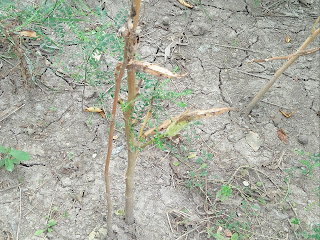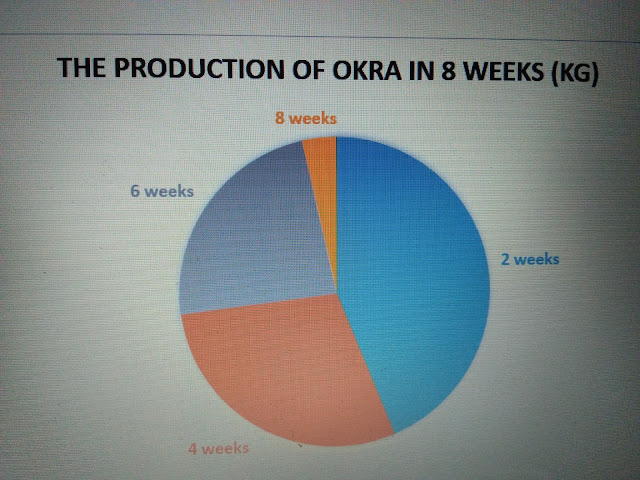OBSERVATION
The
observation about the production of okra and types of disease okra plant were observed at
the okra plantation and there are many types of diseases of okra plant. During
rainy season, the disease is getting
serious . Due to clearing of veins, leaves look chlorotic because there is a
yellow and mosaic pattern on leaves . Fruit production is adversely affected. Fruits
become yellow and lose acceptability.
Okra
should not be harvested in the rain or when excessively wet, and should be
handled with care. Rubber gloves should be used during harvesting and handling.
On harvesting approximately 1 cm of stem should remain attached to the pod. Due
to the perishable nature of okra, harvesting must take place on the day of, or
on the day preceding shipment.
There
are 3 different quality classes of okra: o Extra Class (superior quality);
Ø
Class
I (slight defects in shape, development and colouring);
Ø
Class II (defects in shape, development,
colouring and skin).
Oversize and damage
crops are to be removed in order to meet the highest quality classes.
Size:
Okra
products should be harvest between 40 to 115 mm in length, green, and tender
and readily snap at the tip. Size is
determined by the length of the okra (in mm. without peduncle) in accordance
with the following table:
Table
2 Size codes for okra
|
Size
Code
|
Length of the fruit in mm
|
|
A
|
40.1
– 65.0
|
|
B
|
65.1 – 90.0
|
|
C
|
90.1 – 115.0
|
Another
diseases of okra is the plant growth becomes stunted and the leaves give the
appearance of yellow and wilt growth. The stem turns dark, close to the soil
surface and finally the entire plant wilts.
Okra
plant also have common problems such as seeds do not germinate or the plants do
not emerge. This happen because the soil is not warm enough for germination. Besides,water
soaked spots on leaves and the spot become circular with gray centers. Leaf
spot is a fungus disease of okra.



Comments
Post a Comment